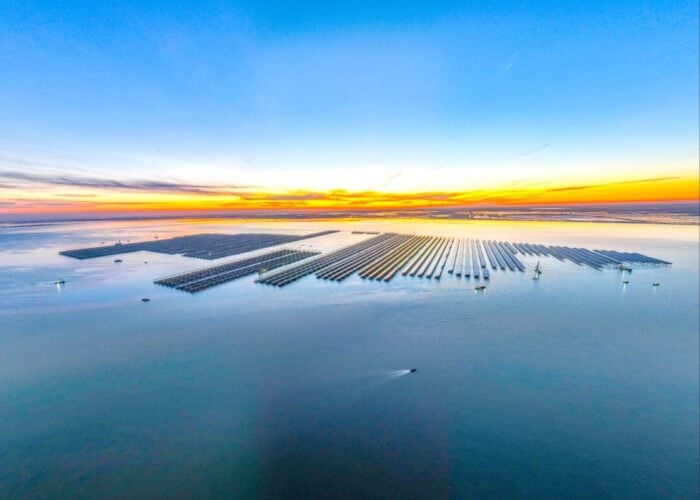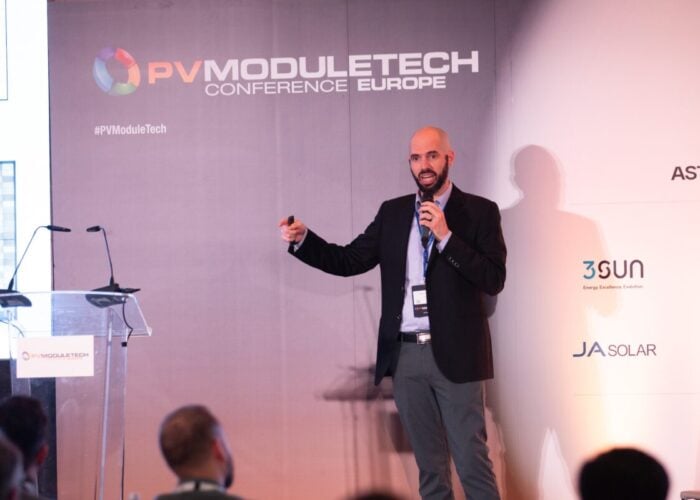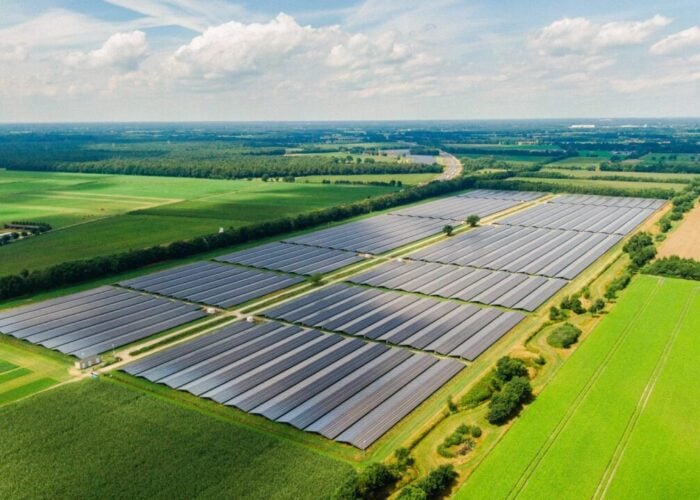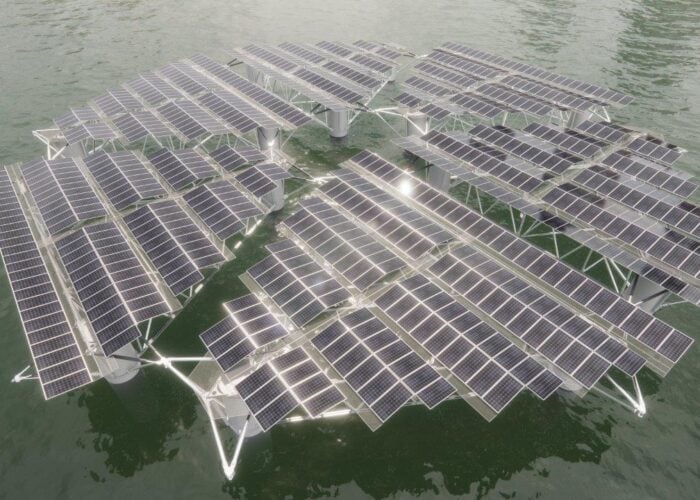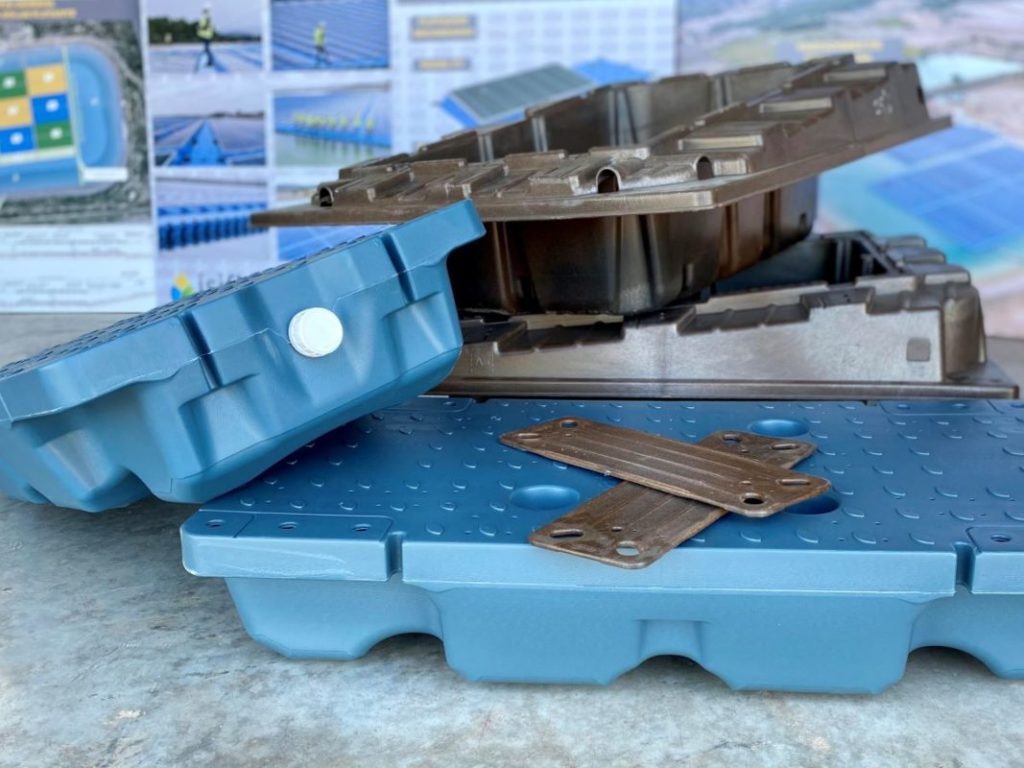
Despite floating solar being a relatively nascent technology, more and more projects are being announced and some of them are incorporating materials or solutions in order to reduce the carbon footprint of the plants.
If creating a circular economy for the solar industry is one way to solve that problem, another is the use of eco-friendly materials that help reduce the carbon footprint of a solar PV plant.
Try Premium for just $1
- Full premium access for the first month at only $1
- Converts to an annual rate after 30 days unless cancelled
- Cancel anytime during the trial period
Premium Benefits
- Expert industry analysis and interviews
- Digital access to PV Tech Power journal
- Exclusive event discounts
Or get the full Premium subscription right away
Or continue reading this article for free
One of those installations is Portuguese utility EDP’s Alqueva floating solar plant, which had many “innovative” aspects to it, says Paulo Pinto, director of innovation at EDP Produção, among them the hybridisation of floating solar with hydropower and later on energy storage. But EDP was also keen on finding ways to reduce the CO2 footprint of the floating solar project, thus reducing the plastic used in its structure.
As the company was interested in reducing the amount of plastic in the floaters, it looked into incorporating cork into its structure, a material Portugal is the biggest producer of in the world. The utility turned to composites firm Corticeira Amorim and Spanish floating solar engineering business Isigenere which partnered to produce the floaters used in the 5MW Alqueva project.
The process of incorporating cork into the floating structure started back in 2019 and involved research from Amorim and Isigenere to find the pros and cons of using different percentages of cork with recycled plastic into the structure and the feasibility of manufacturing it and solving issues with the mounting system, says Miguel Redón, advisor of floating technology and structures at Isigenere.
For the Alqueva project, the percentage of cork used is around 30% of the whole matrix of the secondary floats, says Redón, adding that these are the ones where the wirings are located.
Isigenere and Amorim have since been working on mixing the cork with the polymer compound into the primary structure, which holds the PV panels. This is a project that, according to Redón, has two main points.
The first one is to reach a competitive price with non-eco-friendly solutions and involves improving the technique to produce the disk polymer. “This will help us have a more similar pricing between the conventional high-density polyethylene and the eco-friendly solution,” Redón says.
Moreover, the companies have worked to improve the mechanical and manoeuvrability characteristics of these compounds in order to improve performance.
If the Alqueva project reached 30% of cork use in the manufacturing process of the floaters, Redón says it can raise that number and have a 100% eco-friendly solution where Isigenere can recycle high-density polyethylene from previous installations which is then mixed with the cork to produce a cork polymer composite.
The company is also working on increasing the percentage of cork it uses for the floating structure due to it being a natural product. “The market is keen on seeing those improvements and seeing how the floating solar industry can be more sustainable,” Redón says.
Aside from creating a more sustainable and eco-friendly product that has the potential to reduce the carbon footprint of a floating plant, Isigenere is also looking into the benefits of introducing cork in terms of electrical insulation and mitigation of fire, which could improve the safety of the floating installations. “At the end, cork is a material with very good physical and electrical parameters in terms of trying to mitigate fires,” adds Redón.
The use of cork on different water bodies does not have any impact on the floaters, according to Redón. He says cork could also be used for offshore solar projects since the issue is not related to the cork in itself but the need to have a different structural design adapted for offshore applications.
Going forward, the challenge for Isigenere will be to offer an eco-friendly and sustainable solution that can be cost-competitive with floaters that only use raw materials, which will go towards increasing the use of cork in the floating structure, says Redón, adding: “This means that we can arrive to produce 100% of the float with at least cork.”
PV Tech has taken a closer look at how floating solar construction techniques are evolving in the latest edition of PV Tech Power. You can download your digital copy of PV Tech Power 33 via our subscription service here.

